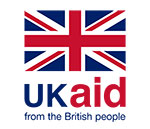In our first blog on Tanzania’s digitalisation journey, we discussed how to foster digital adoption in Tanzania, and in this second blog, we look at the quest for efficient delivery of e-government services, which is increasingly becoming a top priority for the country.
Tanzania has been working for some time on digitising government service delivery. It has developed an e-government strategy, set up an implementing institution, and initiated supporting regulations. An example of an e-government service is the centralised mobile and web-based Government electronic Payment Gateway (GePG) for revenue collection. The GePG allows citizens and businesses to conveniently pay for public services via the GePG app. Public institutions can generate invoices and revenue reports. This has helped to curb revenue leakages, and provides better control over government funds.
Other examples of e-government services include the Government Mobile Platform Citizens Portal (m-GOV), which enables public institutions to offer services via SMS and USSD channels, and the Tanzania Customs Integrated System (TANCIS), developed to support online customs and tax-related compliance.
The Global Innovation Index for 2022 recognises the efforts made by Tanzania in establishing websites for government agencies. The country has a score of 55.3 out of 100 in the sub-indicator of government online services. On the other hand, Tanzania ranks low in the UN’s e-government survey. The country is ranked 153rd out of 193 UN member countries. The UN survey evaluates digital government patterns by examining the range and quality of online services, the state of telecommunication infrastructure, and the existing human capacity to use these services.
UN e-government survey 2022

Source: UN Database
Supply side challenges: Lack of capacity and fragmentation
Due to the scarcity of in-house or local technical experts in government agencies with sufficient technical know-how in deploying robust e-government applications, Tanzania is highly reliant on international vendors. These vendors often propose non-standard solutions that do not fully incorporate or match actual functions or operational processes and the needs of public institutions. In such cases, systems automate only certain parts of a public institution’s operational process, thereby requiring manual intervention for non-automated activities.
For example, the Business Registration and Licensing Agency (BRELA) has struggled with its e-government solution because the online registration system did not offer a help desk module to provide guidance and troubleshoot problems. The system also lacks functionalities such as message queuing to ensure that submitted applications are treated on a first-come-first-serve basis. In addition, it is only capable of accommodating integration with a maximum of nine information systems (currently linked to two), whereas it was originally envisaged to be integrated with 17 information systems.
Overall, fragmentation of systems and technologies remains the main challenge. Given the presence of multiple solutions offered by international tech companies, existing systems often perform similar functions but are deployed separately, rather than synchronised into one platform. This fragmentation poses a huge challenge to effective data sharing and to systems integration between government institutions.
Demand side challenges: Connectivity, awareness and skills
Unreliable broadband connectivity, particularly in rural communities, continues to restrict usage of available e-government services. To this end, more than two-thirds of the funding going toward the World Bank-supported Digital Tanzania Project (DTP) is targeted at enhancing broadband connectivity to at least 200 government institutions, including schools and hospitals. The funding is also going toward acquiring cloud infrastructure to strengthen the national data centre, extending data-enabled network coverage to an estimated three million people living in underserved rural areas of the country, and setting up 31 one-stop centres across the country to access all public e-services.
While improving connectivity remains a priority, full awareness of the benefits of e-government is a prerequisite for individuals, businesses and governments to adopt innovations. Adoption of e-government services is still slow, more so for regional and local government institutions. Public officials and citizens are often not aware of the e-services that are already available and do not have visibility on new e-services deployed by the government. They not only require greater awareness but also greater skills and education on existing government digital services. Government officials, arguably the main agents of e-government adoption, often lack sufficient capacity and skills to maximise the use of these systems for greater efficiency.
Greater prioritisation of people-centred design approaches can help in driving awareness and adoption. To improve public e-services, system design must be responsive to user feedback and should allow for continuous iteration.
Considerations for strengthening e-government services
Analysis conducted by GSMA’s Central Insights Unit in our recent report, shows that to further extend the use of digital technologies for better public service delivery, the government should consider the following initiatives:
1. Prioritise user needs and address fragmentation
Adopting a user-centred and agile approach to developing digital e-government applications can boost usage. Efforts could focus on actively engaging users, including vulnerable groups, from pre- to post-design phases of digital products or services. It is also important that relevant services are more visible and easier to find for users. This may entail unifying these services on a single integrated government website that offers a one-stop journey and end-to-end services built around users’ needs, rather than one website per government institution, where users need to be conversant with the various parts of government.
2. Strengthen public institutions’ internal capacity for effective e-service delivery
Investing in upskilling public sector officials and raising citizens’ awareness of existing government digital services should be priorities. One key initiative in this area would be the establishment of a dedicated multidisciplinary team tasked with improving digital public service delivery and building internal capacity over a long-term period. Real-time technical assistance from development partners and transfer of knowledge can also be useful to strengthen the government’s internal capacity for effective e-service delivery.
3. Ensure a clearer mandate and robust expertise for the e-Government Authority (e-GA)
Establishing a clear mandate for e-GA will be crucial to foster e-government adoption. The e-GA will also benefit from strengthening its expertise and human resource capacity to effectively coordinate e-government initiatives, providing much-needed support to ministries, departments and other public sector agencies. A stronger e-GA is required for promoting greater systems interoperability, information sharing and big data analysis to support evidence-based policymaking.
Read the GSMA report on ‘Tanzania’s Digitalisation Journey: Opportunities for Value Creation’ for more information and look out for part 3 in this blog series, which will assess Tanzania’s e-commerce readiness, and actions required to harness e-commerce growth opportunities in the country.
THIS INITIATIVE IS CURRENTLY FUNDED BY THE UK FOREIGN, COMMONWEALTH & DEVELOPMENT OFFICE (FCDO), AND SUPPORTED BY THE GSMA AND ITS MEMBERS.



